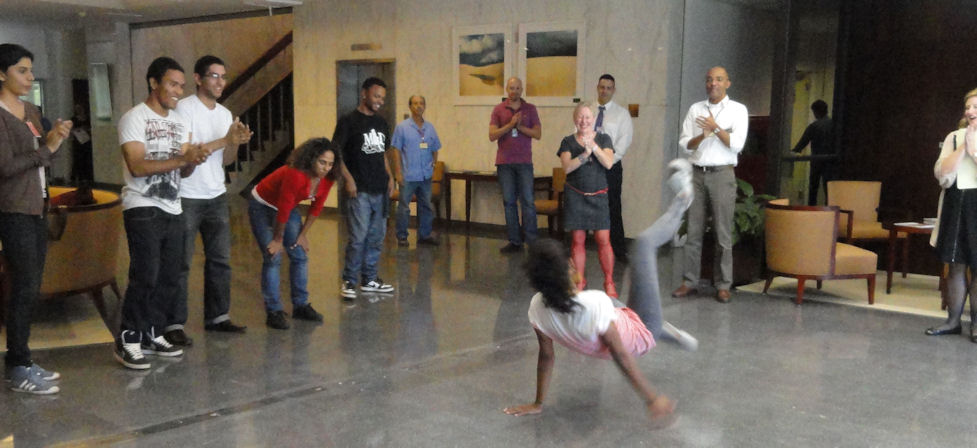
I didn’t understand the program when it was offered by our colleagues at ECA in Washington but I think I am becoming a believer. Our goal is to connect the American nation with the Brazilian nation, to have confidence that people will do the right thing when they are connected and that they understand things that government official like us do not. This was certainly the case with hip-hop. Everything I knew about hip-hop came from what I saw on TV.
We found seven young hip-hop dancers to participate in an exchange in the U.S. They will meet American hip-hop dancers to exchange experience and styles. They came in for their visas and pre-departure meeting, so I had a chance to have lunch with them.

They were from Rio, Brasília & Belém. They professed their admiration of American hip-hop and told me that their interest in the music and dancing had made them interested in American society in general. Although their dancing styles are based on American models, they explained that each hip-hop dancer develops his/her own particular styles and that they have regional “accents.” Those who really know can tell the difference. Dancers who come from Belém have difference dance accents from those who come from Rio, for example. One reason they thought it would be so useful to travel to the U.S. was to pick up on the varieties of hip-hop in the U.S. There is a kind of evolutionary synergy, which means that not only do the accents vary over geography, but also over time. Hip-hop is in a perpetual state of development.
Dance is a language I don’t know. In fact it is a language that I don’t usually even know is speaking. That is why we need to make the connections with those who know.
I asked the dancers if she could show me what they did and the pictures are from that. They are a bit blurry, wince they were moving fast. Somebody asking if I could do something like that. I am sure I could fall to the floor, but I would not quickly be able to jump back up.
